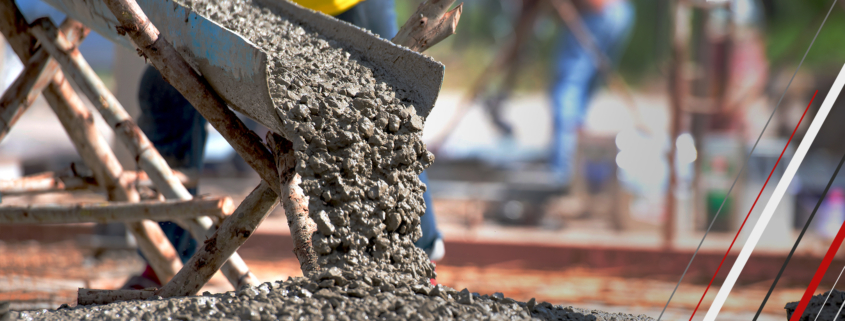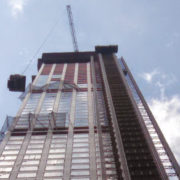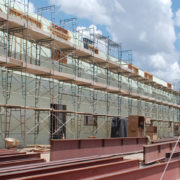As the problem with RAAC concrete being used in schools intensifies, what are the issues?
What is RAAC?
Reinforced Autoclaved Aerated Concrete (RAAC), also known as Reinforced AAC, is a building material that combines the properties of Autoclaved Aerated Concrete (AAC) with reinforcement to enhance its structural strength. It is a lightweight, precast concrete alternative made from sand, cement, lime, and aluminum powder. The aluminum powder creates tiny bubbles in the concrete during a chemical reaction, resulting in a highly porous and lightweight material. AAC is known for its excellent thermal insulation properties, low density, and ease of construction.
In the context of RAAC, reinforcement typically refers to the addition of steel reinforcement, such as rebars (reinforcing bars), mesh, or other structural elements, within the AAC panels or blocks. Reinforcement is added to improve the material’s tensile strength and structural stability, making it suitable for a wider range of structural applications.
The combination of AAC and reinforcement offers several advantages:
- Structural Strength: The inclusion of reinforcement enhances the material’s ability to withstand tensile and shear forces, making it suitable for load-bearing applications.
- Lightweight: RAAC retains the lightweight properties of AAC, reducing the overall weight of the structure, which can be advantageous in construction.
- Thermal Insulation: RAAC maintains the excellent thermal insulation properties of AAC, contributing to energy efficiency in buildings.
- Fire Resistance: AAC, including RAAC, is known for its fire-resistant properties.
- Sound Insulation: RAAC can offer good sound insulation capabilities.
Reinforced AAC is commonly used in structural applications where both strength and insulation properties are required. It can be used in residential, commercial, and industrial construction for walls, floors, and roofs. However, it’s important to follow proper design and construction practices to ensure the structural integrity of RAAC buildings. Engineers and architects typically design RAAC structures to meet local building codes and standards, taking into account the specific requirements of the project and the region’s climate and environmental conditions.
While reinforced autoclaved aerated concrete (AAC) has many benefits, it also comes with certain potential risks and considerations:
- Lack of Awareness: One of the primary risks associated with AAC is a lack of awareness or expertise among builders and contractors. Improper installation and construction techniques can lead to structural issues or reduced performance.
- Reinforcement Corrosion: If not adequately protected, steel reinforcement within AAC can corrode over time, especially in environments with high humidity or exposure to salts. This can weaken the structure and compromise its durability.
- Moisture Management: AAC is susceptible to moisture infiltration if not properly sealed or protected. Moisture can lead to mold growth, degradation of the AAC material, and reduced insulation properties.
- Inadequate Design: In some cases, the design of reinforced AAC structures may not account for specific structural loads or environmental conditions, leading to potential weaknesses or safety hazards.
- Fire Resistance: While AAC is generally fire-resistant, the presence of steel reinforcement can affect its fire resistance properties. If not designed and installed correctly, the reinforcement may become a heat bridge, reducing the overall fire resistance of the structure.
Why is it is the news?
Last week the Department of Education issued an alert to 156 schools, nurseries and colleges stating that the material is now life expired and could collapse with little to no notice. This left said schools scrambling to close and organise alternate arrangements the weekend before they go back. The Department also stated that they not fund emergency measures needed to keep teaching going, placing extra pressure on stretched school budgets. The Cabinet Office also confirmed that 34 other public buildings had also been found to feature RAAC. Investigations are continuing but so far these include 24 hospitals sites with RAAC plank construction in whole or a significant part of their estate. Seven of these need a full replacement and will be rebuilt before 2030.
The Government has been aware of public sector buildings that contain RAAC since 1994 and have been monitoring their condition since 2018. They say that they continually assess new information and research about RAAC to ensure the safety of schools and pupils. In 2022, the Department for Education sent a questionnaire to all responsible bodies, asking them to provide information to help understand the use of RAAC across the school estate and make sure the correct support is in place. Recent cases have now changed that assessment of the risk that RAAC poses to building safety. They are therefore taking immediate steps to ensure the safety of staff and pupils in line with this.
Sources: The Guardian / GOV.co.uk









Leave a Reply
Want to join the discussion?Feel free to contribute!